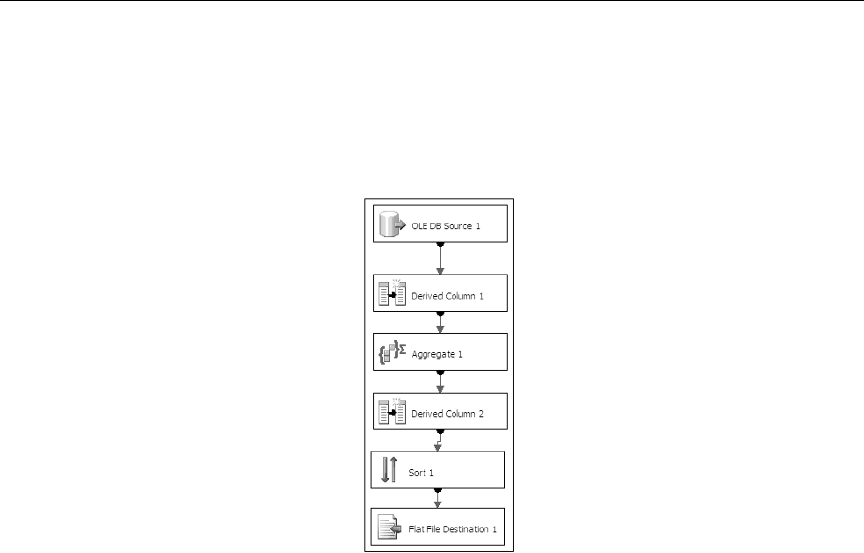Datasheet

Chapter 1: Welcome to SQL Server Integration Services
14
anything that manipulates data falls into the Data Flow category. As data moves through each step of the
Data Flow, the data changes, based on what the transform does. For example, in Figure 1 - 7, a new column
is derived using the Derived Column Transform, and that new column is then available to subsequent
transformations or to the destination.
In this section, each of the sources, destinations, and transformations are covered from an overview
perspective. These areas are covered in much more detail in later chapters.
Figure 1-7
Sources
A source is a component that you add to the Data Flow design surface to specify the location of the source
data that is to feed into the data pump. Sources are configured to use Connection Managers to allow for the
ability to reuse connections throughout your package. Six sources can be used out-of-the-box with SSIS:
OLE DB Source: Connects to nearly any OLE DB Data Source, such as SQL Server, Access,
Oracle, or DB2, to name just a few.
Excel Source: Specializes in receiving data from Excel spreadsheets. This source also makes it
easy to run SQL queries against your Excel spreadsheet to narrow the scope of the data that you
wish to pass through the flow.
Flat File Source: Connects to a delimited or fixed - width file.
Raw File Source: Produces a specialized binary file format for data that is in transit and is
especially quick to read by SSIS.
Xml Source: Can retrieve data from an XML document.
ADO.NET Source: This source is just like the OLE DB Source but only for ADO.NET - based
sources. The internal implementation uses an ADO.NET DataReader as the source. The ADO
.NET connection is much like the one you see in the .NET Framework when handcoding a
connection and retrieval from a database.
❑
❑
❑
❑
❑
❑
c01.indd 14c01.indd 14 8/28/08 12:01:20 PM8/28/08 12:01:20 PM










